The Decked Canoe Archives
Assembled by Tim Gittins
1933 - The Year of the International Challenge Cup
from Sixty Years Behind the Mast - The Fox on the Water by Gordon K. (Sandy) Douglas
To the canoeing world and, in fact, to the small-boat sailing world, the summer of 1933 was notable for the challenge of the English canoe sailors for the International Challenge Cup which the New York Canoe Club had donated in 1885. In 1885 and 1886 the English had challenged and been defeated, and over the years the cup had been successfully defended against a number of Canadian challengers. But the 1933 challenge involved more than just sailing skills because it was to be a contest between canoes of extremely different types. The cup was to be defended by our ketch-rigged, fine-lined, light-weather displacement boats, which would sail against sloop-rigged, beamy and powerful, ballasted heavy-weather English boats. This was to be a test between our traditional canoes and the new and revolutionary - but traditional to them - planing boats. In truth, however, it had been only in very recent years that Uffa Fox had revolutionized their type of canoe from displacement to planing.
Canoeing had had its birth at the same time in England and the United States, and in its early years had developed along similar lines. The sport was given great impetus by the publication in 1866 of the book, A Thousand Miles in the Rob Roy Canoe on Twenty Lakes and Rivers of Europe, by John MacGregor who told of his recently completed adventures. This popular book, and others of a similar nature, opened up canoeing to a large and receptive public. MacGregor was instrumental in founding the Royal Canoe Club in 1867; and in this country the New York Canoe Club was founded in 1871. The early canoeists were out-of-doorsmen who enjoyed paddling and cruising under sail, men who loved the great outdoors. The New York Canoe Club held its first rendezvous, its first regatta, on Flushing Bay, near the western end of Long Island Sound, in 1871, and as was perfectly natural, there were impromptu sailing races as a part of the activities.
Canoeing grew rapidly in popularity. In 1880 Nathaniel Bishop, author of The Voyage of the Paper Canoe, sent an invitation to all canoeists to meet at Lake George to discuss the forming of a national organization. Twenty enthusiasts met there, the result being the founding of the American Canoe Association, the A.C.A. And one result of this, fifty-three years later, was that the English team of Uffa Fox (Uffa is pronounced Uffa, as in puff-a) and Roger deQuincey visited Sugar Island en route to Flushing Bay which was to be the scene of the Challenge Cup races.
An article in the September 1980 Canoe Magazine by James Bonfitto, describes the first Challenge Cup match, in 1885, as below. Note that Bonfitto wrongly states that the International Challenge Cup was proposed by W. Baden Powell. In fact it was offered by the ACA executive. Baden-Powell and E.B. Tredwin, both of the Royal Canoe Club, England, were planning a visit to America in the summer of 1886 to challenge for a perpetual trophy offered by the New York Canoe Club. In light of the visiting English canoeists, the ACA resolved to offer a challenge trophy as well. Also Bonfitto infers that the 'Pearl' was owned by W. Stewart. Rather, the Pearl belonged to Tredwin. However at the last minute Tredwin was unable to attend and Stewart raced in his place, sailing Tredwin's 'Pearl' of 1886.
Public interest in canoeing was at an all-time high. By the end of the 1886 nearly 100 local canoe clubs flourished in the U.S. Across the Atlantic, interest in canoeing also was at a peak. In late 1885, Warrington Baden-Powell, an old friend of John MacGregor and designer of his own Nautilus canoes, proposed an International Canoe Sailing Cup Race to the A.C.A.
A.C.A. officials promptly accepted the challenge and over the next few months the details were worked out. All parties agreed that the first International Sailing Canoe Cup Race would be held in conjunction with the ACA's seventh annual encampment in August 1886 at Delaney's Point Lake Champlain. This site was appropriate, lying on the border between the U.S. and Canada. The stage was set.
Canoe Clubs on both sides of the Atlantic held preliminary races to choose their champions for the forthcoming International Cup Race. From England came word that Warringion Baden-Powell in his Nautilus #5 was their champion. He would be accompanied by their runner-up Walter Stewart in his canoe Pearl. The ACA Race No. 20. the Challenge Cup Race, loomed over the waters at Delaney's Point.
August arrived, and by the 13th tents had grown up all over Delaney's Point. Old canoeing friends reunited as newcomers joined in, too. An international excitement snapped in the air. The British invasion of Warrington Baden-Powell and Walter Stewart arrived. After a week of meetings, campfires, parties and general good times, the scheduled races began.
As Wednesday's Challenge Cup Race drew near it was apparent that the heavy, ponderous English sailing canoes were no match for their small, lighter American counterparts. The English canoes carried weighted centerboards and roughly 100 pounds of additional ballast. Their skippers hunkered down inside the cockpit in perfect sailing form for England's heavy, rolling coastal water. The American canoes were lightning fast in comparison. They carried no ballast and their skippers danced all over their decks taking advantage of each wave and gust of wind.
he ACA Challenge Cup Race began and immediately the English canoes lagged behind. Baden-Powell finished eighth in his Nautilus and Stewart placed ninth in Pearl.
While the British and American canoeing grew from a common ancestry, the two countries did not work together to develop rules in common. To the contrary, canoes evolved differently to suit the different sailing conditions in the two countries. We, in this country, doing most of our sailing on protected inland waters with prevailingly light winds, developed narrow, light and overcanvassed canoes. The English, on the leeward side of the Atlantic, sailing mostly on coastal waters with more severe conditions of wind and sea, developed heavier and beamier canoes with much greater stability from hull form and heavy, ballasted centerboards. This difference was academic when they sailed in their water and we in ours.
In this first match in 1885, the English boats were no match for ours, dropping behind right from the start. To quote again from the Canoe article,
But the real race was not between countries, but between the philosophical factions in the ACA. The advocates of multi-purpose cruising/racing canoes, versus those of all-out racing canoes. Each faction had its champion. The cruiser/racers were represented by Robert Gibson's Rushton-built Vesper, and the hardcore racers had E. H. Barney's Joyner-built Pecowsic as their strongest contender.
The racing canoe won out. Quoting again from the Canoe article,
'The old guard moaned, as old guards often do, and said this specialization would be the end of canoeing.'
While the writer thinks not, in my opinion it was. When the canoe became a racing machine instead of a utility boat for camping, cruising and paddling, as well as for racing, it lost most of the very qualities which had been the reason for its existence. By 1900, gone were most of the nearly two hundred canoe clubs, gone were the hundreds of campers and competitors who, in the 1880s, had made canoe sailing a popular sport. There still were enthusiasts - and still are - but now they numbered only a few dozen. (Canoeing continues and, in fact, has in recent years had a rebirth of popularity based on white-water racing made possible by inexpensive fiberglass canoes and kayaks.)
In these early days, of course, rules governing canoes had not yet been developed and, on top of this, there was little knowledge about such small sailing boats and sailing rigs. The early canoes were built in all sizes and shapes from ten feet in length to eighteen feet and more. For reasons of practicality the ketch rig soon became the standard, the reasons being that with the cockpit for sleeping taking up the midships half of the boat, for econemy of space, to get the mast out of the way of the cockpit, the mast was stepped far forward, close to the bow. Then, with the bow and stern decked over for four or five feet (and with a side deck perhaps six inches wide), a mizzenmast could be stepped abaft the cockpit with adequate deck length for sheeting the mizzen boom.
With no background knowledge of experience, with no knowledge of aerodynamics at that time, sailing rigs of all kinds were tried, limited only by the imagination. Most of the sails used rigid battens to create what we call batwing sails. For convenience in shipping by baggage car, the usual mode of transportation, spars generally were shorter than the boat, and this led to the popularity of the sliding gunter rig which uses a gaff which, hoisted, becomes an extension of the mast, in effect a topmast. One advantage of this is that when the sail is reefed the gaff slides straight down, thus reducing the height of the mast. Many boats used a rigid batten parallel to the boom and a foot or two above it, which, with a reefing line, gave the equivalent of the modern jiffy reef.
Around the turn of the century soft sails, sails without full-length battens, came into use, the early ones having the sailcloths running parallel to the leech rather than at a right angle to it, as is done today. And, since canoes no longer were used for cruising, they became completely decked over with only a small, self-bailing cockpit. The transformation from cruising to racing now was complete.
In 1892 and 1893 the Sailing Trophy was won by Paul Butler, of Lowell, Massachusetts. Finding himself unable to compete on even terms because he was small in size and light in weight, Butler invented the sliding seat with the idea that it would let him compete on equal terms with the larger men. It did - for a short time - until they also adopted it. And so that he could handle his sheets from out on the seat, Butler also, by necessity, invented the cam cleat. Now the sailing canoe was completely a racing machine.
As this evolution took place the canoes became more and more of one size and type, so much so that in 1909 the ACA decided to standardize the boats at sixteen feet in length, with a minimum beam of thirty inches and maximum sail area of ninety square feet, known as the sixteen-thirty, of which my Nymph was a typical example. Variations in hull design were permitted within these limits, and many designs were tried. It is interesting that Leo Friede's Mermaid, over many years the most successful of all, was essentially double-ended with simple and fair lines. This may tell us what is best for a fast displacement hull, and up to the time of Uffa Fox no one had been able to improve on her. Also decided at this time was that the sail plan must be carried on two unstayed masts, the intent being that we would maintain the ketch rig. Uffa Fox had other ideas, as we discovered in 1933.
In subsequent years there was pressure to allow a larger boat, and in 1915, according to an article in the Encyclopaedia Britannica, at the urging of George P. Douglass (my father) and Hilding Froling, the rules were modified to permit a length of seventeen feet, a beam of perhaps thirty-four inches, and with a formula for sail area which added area for each inch of added beam, and deducted for added length. I think that in those days we did not really appreciate the fact that the seventeen-footer is inherently a faster boat than the sixteen-footer in any wind strong enough to take them both up to hull speed - and for the sailing canoe, very little wind is needed for that. Although Hilding Froling won the Sailing Trophy in 1921 and 1927 in a 17-footer, Doris III, and Rolf Armstrong won in 1932 and 1934 in Mannequin, another 17-footer, it finally was Uffa's Wake, sailed by Roger de Quincey in 1936, which convinced us of the benefits of greater length and beam.
The superiority of the seventeen-footer comes mostly from its greater length and consequent higher hull speed resulting from the fact that waves in water travel at a speed dependent on their length from crest to crest. According to Froude's Theorem, the square root of their length in feet, gives their speed in miles per hour. Thus, a wave four feet from crest to crest travels at two miles per hour, and a wave sixteen feet from crest to crest travels at four miles per hour, etc.
The height of the wave has no bearing on its speed. How this affects the speed of the boat is that a boat makes waves as it moves. At a low speed the waves, starting with the bow wave, are short and do not bother the boat, although they do absorb energy. As the boat goes faster the waves become longer and longer until the point is reached where the second wave reaches the stern, and the boat now is supported at each end, by the bow wave forward and by the quarter wave at the stern. At this stage the boat still moves easily. But if it increases its speed the wave becomes still longer, the quarter wave commences to leave the boat and the stern starts to squat, to drop into the hollow. The boat now, in effect, will be trying to climb onto its own bow wave, a hill of its own making, and soon will reach its maximum hull speed which, for a racing yacht, is approximately 1.5 times the square root of its waterline length. It follows, then, that a longer boat will be faster than a shorter boat because it will be able to go to a higher wave speed.
A heavy and beamy boat will create higher waves with deeper hollows, and under sail power alone will not be able to exceed its hull speed, whereas a light boat with easy lines will make smaller waves, and with plenty of canvas may be able to climb the hill and ride on its own bow wave, to level off - and plane. Once the boat planes the wave-length theory no longer applies - in theory - but we do know that even then length counts. The big thirty-eight-foot A Scow planes faster than the twenty-foot C Scow, for example. The American sailing canoes I have been writing about were fine-ended displacement boats which did not truly plane, but rather sliced through the water with a minimum of fuss in the fashion of the modern catamaran hull. They didn't really plane, but with the power provided by the sliding seat they did go a great deal faster than their theoretical hull speed.
This, then, is how matters stood at the time we received the challenge from England in 1932 by Uffa Fox and Roger de Quincey.
For about twenty-five years American canoe sailing smugly and contentedly had stayed in the same rut. We had kept the ketch rig although there now was no reason for keeping it, other than its beautiful simplicity of unstayed masts, now that cruising cockpits no longer were used. We used plate centerboards and rudders. There had been slight variations in hull design but no measurable improvement. In 1933 my Nymph was exactly as she was given to me in 1918. She had the same sails, never off the spars, and even the same lacings holding them to the spars. Up to 1933 two seventeen-footers had been built, one of them sailed by Rolf Armstrong, the well-known cover-girl artist of that time. We all used sliding seats and the Norwegian gear with its transverse sliding tiller.
During this time the English had developed their canoes in a different direction. Instead of adopting the sliding seat, as we had, they had developed heavier and beamier boats, boats with so much stability in the hull, plus a heavy ballasted centerboard, that they could be sailed without the sliding seat - but with a lot of hiking, as in the fashion of the early canoes.
The problem facing Uffa Fox, the designer, was - if possible - to design a canoe which would meet both sets of rules, a canoe which would compete well in England and in addition would be competitive under the American rules which would govern the Challenge Cup races.
I have more than a little hesitation in writing about Uffa Fox for fear 1 may not do justice to so important a subject. I have no hesitation in naming him my most unforgettable character. Boat designer, racing skipper, writer, wit, raconteur, singer and friend - he was all of these and more. His influence on the design and development of small sailboats has been felt throughout the sailing world. Whether directly, or indirectly, his work has influenced all subsequent small-boat design. It was Uffa Fox who, in the 1920s, transformed the ugly duckling little dinghy into the modern planing, racing boat, and in the process brought into being a new school of small-boat sailing. All subsequent design has, willy-nilly, resulted from his theories of design.
As a writer, in the 1930s Uffa published a series of books, fascinating books, chattily written to recount the important sailing events of the year, to describe the significant designs of all types of boats, large and small, sail and power, with an analysis of each which makes them textbooks if the reader will take the trouble to absorb his keen comments and observations. One section of a book may deal with power boats, another with cruising boats and a third with the racing classes from little dinghies to the J Class. One of the books, for example, opens with photographs and detailed line and construction drawings of the early Viking ships. Uffa points out what fine ships these were, and how little improvement in boat design there has been in the last thousand years.
Uffa was one of the great small-boat sailors. A photograph of his International 14, Avenger, shows a string of fifty-seven trophy flags for fifty-seven races: fifty-two firsts, two seconds and three thirds. Granting that he sailed an outstanding boat, nevertheless he was competing against some of England's best sailors, many of whom also sailed outstanding boats, some of which had been designed and built by none other than Uffa Fox. He had to be a superb sailor to achieve a record like that.
Behind all of this lay boundless energy and enthusiasm combined with a fertile imagination, good nature and a ready wit. His knowledge of boats, boat design and the sea, was acquired through a long apprenticeship of hard work and experience.
The challenge facing Uffa, then, was to design a canoe which would do well under both the English rules and our rules. A big problem was our rule requiring the sails to be carried on two masts. We intended, and assumed, that this would mean a ketch rig, and this Uffa did not want. The English had long since gone to a sloop rig which they considered to be superior. There were other compromises to be made, but this was a major problem.
How did he solve these problems to give the best features of each and to meet both rules? Uffa solved the mast problem by moving the main mast aft to a normal sloop-rig position, and by putting the mizzenmast into an inclined tube in the bow in such a way that it met, and was attached to, the main mast at its upper end, thus becoming a wooden stay to carry the mizzen sail which now was cut into the form of a jib! But suppose we let Uffa tell the story by quoting part of chapter 11, "Winning the Canoe Championship of America," from his book, Sailing, Seamanship and Yacht Construction, published in 1936 by Charles Scribner's Sons:
On February 25, 1933, the Royal Canoe Club held its annual dinner and presentation of cups, and as winner of the two most important of these, it was my privilege and pleasure to fill them and pass them around the table. In olden times many a man met his end by being stabbed from behind whilst drinking, and often in old pictures a man is shown drinking with his back to the wall. This protected him from behind, and the old tankards had glass bottoms, so that those drinking could see any danger ahead. As the challenge and DeQuincey Cups were passed round, three men stood all the while, the man drinking toasted the man on his left, while the man on his right, who drank last, remained standing, so the man drinking had a friend standing on either side of him as was the old custom.
Through dinner we toasted canoeists the world over, and afterwards Roger and I departed, he to Oxford and I to the Isle of Wight, hoping that we should both take canoes to America in August, sister ships that would not only conform to the American rules, but also to the English.
Two days later, on the Monday, I sent the following cable to a friend, who is the oldest canoeist in America:
W.P. Stephens, 3716 Bay St., Bayside, New York Please send sailing canoe building rules, latest date for challenge from England and date of Contest. Uffa
Letters and cables passed between America, mostly cables from England, with the result that we challenged for everything we could, Roger as the Royal Canoe Club, and I the Number Yawl Club.
Then came the designing of our canoes, Roger helping with letters, full of ideas, from Trinity (Oxford Univ.), and finally the canoes were designed to both sets of rules.
The American maximum beam rule forced us to design canoes 3 in. narrower than the English rule, whilst the English rule, demanding a 1/4 in. planking, forced our hulls 40 lbs. over the minimum weight allowed in America.
Time alone would tell if we could afford to give away the 3 in. of beam under the English rule, where no sliding seat was allowed, and carry the extra 40 lb. of weight around the American courses, but we thought we might, and it was worth trying.
The rig would have to be different, as entirely different rules prevailed. Under the American rule, we were allowed 111 sq. ft. of sail, actual area, with a height of 16 ft., but no side stays on the mast, while under the English rule we were allowed 96 sq. ft., Y.R.A. measurement, with no restriction as to height or staying of mast.
The Americans had no limit to the depth of centerboard, so while racing there, we thought we would try a very deep one, which was impossible under the English rule, which only allowed a board to extend 1 metre below the canoe.
The American rules allowed a sliding seat, and the English did not, so by changing rigs and drop keels, and adding a sliding seat, our canoes were changed from the English to the American rules.
The American rule allowing a sliding seat, but no side stays, made a fair amount of work calculating the leverage and power exerted by a man five foot out on a slide, plus the power of the canoe and balancing this against the strength and elasticity of hollow spruce spars. For, to win races, weight, and so strength, must be cut down to its limit, yet to carry away a spar is fatal.
After the designing came the building. VALIANT and EAST ANGLIAN were built upside down, for the bottom of any vessel is the part that decides her speed, and by building upside down this is always in view.
The English canoes did, indeed, look strange to our eyes when first we saw them. We couldn't help but admire the superb craftsmanship with which they were built, so near to perfection, and the mirror-like shine of their varnish finish. But to us they were the antithesis of the boats we knew. The sloop rig alone was enough of a change from the look of our canoes, but where our boats were slender and dainty, with fine sharp ends, the English canoes appeared squat, giving the impression of brute power. Where our canoes had softly rounded bilges for a minimum of wetted surface but little stability, theirs were almost flat in the bottom with very hard bilges. Our power to carry sail was provided entirely by our live ballast out on the sliding seat. Fully rigged, our canoes had so little stability they would not even stand upright, but had to be balanced at all times. Their canoes, developed for heavy weather, sailing without the advantage of sliding seats, had their own stability through greater beam with a flat floor and hard bilges, plus a heavy and deep centerboard. Uffa had gone as far as possible to use the maximum beam permitted under our rules, forty-three inches, by carrying the full beam very nearly the length of the hull, to where the gunwales, as they came together at the stern, made an angle of more than ninety degrees. The bow also was very full at the deck.
Forced to it by the English rules, Uffa had built these boats with open cockpits, with splashboards on the bow deck to help to shed water. The four and one-half foot length of the cockpit makes me think that sometimes in heavy weather these boats perhaps were sailed by a crew of two. Other great differences were in the underbody rudders, shipped through a rudder trunk through the stern deck, and the heavy and deep cast bronze centerboard, heavy enough to require a winch, and very carefully polished to a beautifully streamlined shape. This board, drawing four feet nine inches, was in great contrast to our shallow and wide aluminum plate centerboards drawing about three feet. We always had used stern rudders controlled by our Norwegian gear with its sliding transverse tiller, but the English, who preferred a regular tiller, had found that a stern rudder would require a six-foot tiller, too long to be practical, and for that reason had moved the rudder nearly three feet forward of the stern, but removable through the rudder trunk.
If their boats were so very different from ours, we found Uffa Fox and Roger de Quincey to be equally different from each other. Roger de Quincey was very much the English aristocrat. Charming, young, rather quiet and a bit shy, a student at Trinity College, Oxford, a direct descendant of the de Quincey who was one of the signers of the Magna Charta in 1215, a polished gentleman in the true sense of the word, Roger was in many ways the antithesis of his teammate, Uffa Fox. Uffa, hailing from East Anglia on the North Sea, was a man of the people. East Anglia was one of the kingdoms which made up Anglo-Saxon England, and Uffa is an old Anglo-Saxon name. Uffa was a self-made designer whose fertile imagination, plus experience during the first war in building fast motorboats, hydroplanes and flying boats, gave him his knowledge of the design and construction of planing hulls. When he came to designing small boats, notably the International 14, he realized that if he followed traditional design he always would be a follower, and so decided to use his knowledge of planing hulls to try something radically different. Very much an extrovert, Uffa was known for his warm and friendiy nature, his vitality and boundless enthusiasm. Although they came from such different backgrounds, and Uffa was enough older to have been Roger's father, they had enough in common, their love of sailing, their skill, and the quest for the Challenge Cup, to work in harmony as a team. And a formidable team they proved to be, with Uffa representing the Humber Yawl Club and Roger the Royal Canoe Club.
With so many differences in design of hull, rigging and sails, with the English canoes having been modified to meet our rules, we all - we and they - naturally were interested in learning how they would compare with ours around the race triangle. With the greater weight and, to us, the clumsy appearance of the English boats in mind, our thoughts went back to the early challenges of the past century when our canoes left the English far behind. To our great surprise, it very soon became apparent that in light winds we were about even, that with any weight of wind they were faster, and that it was only in a drifter that we had an advantage.
My greatest surprise and awakening came in one of the flrst tune-up races. I had rounded the leeward mark ahead of Roger deQuincey in Valiant. On the Sugar Island race course the fixed starting line is at the corner of the triangle nearest Sugar Island, meaning that in the prevailing southwest wind this gives a reaching start with two reaching legs in advance of the windward leg. In the light-medium breeze we had sailed about even on the reaches, and as soon as we hardened down for the beat I commenced to pull away from Roger. For a few minutes it looked like a walkaway. But when I tacked to cover him I was shocked to discover that he had pointed so much higher, at least a point higher, and had eaten up to windward to such an extent that I had to cross well behind his stern. His deep and efficient centerboard and his bluff lee bow had helped him to eat up into the wind, and this was to be pretty much the story of the races.
The first of the Sailing Trophy races of the American Championship was held in a wind too strong for our boats. Uffa won this one handily, Roger was second and I placed third. Only five of our nine boats completed the course. The second race, in a medium wind, also was won by Uffa, with Rolf Armstrong second, Roger third and with me in fourth place. The third race, in a steady six-to-eight-mile wind, found us about even. The lead changed several times but I managed a close win with Uffa only a few seconds behind in second place, Fred Wolters third and Roger fourth. This gave Uffa, with two firsts and a second, 3 1/2 points to my 7 3/4 points and Roger's 9.
The races, THE races, for the International Challenge Cup were scheduled to be sailed on Flushing Bay, Long Island, two weeks later. My father and I considered my going down for the selection races which would determine the defenders of the cup, but knowing, all too well, the members of the Selection Committee - with some of whom we were not on the friendliest terms - we decided that it would be futile for me to take my Nymph there. We had no confidence that I would be one of those selected, and as it turned out, the committee decided that the results of the trial races were inconclusive and arbitrarily named Leo Friede and Walter Busch. Friede, sailing his Mermaid, was one of our best sailors. In the past he had twice successfully defended the cup against Canadian challengers. Walter Busch, sailing Loon, was an unknown.
The outcome of the Challenge Cup races probably would have been no different had I been a defender. The Americans won the first race in light airs. To Uffa's surprise, the triangle set by the cornmittee was such that one leg was a dead run and the other two were reaches, giving none of the windward work at which the English excelled.
The second race started with a flat calm, but after a postponement a fresh breeze came in exactly opposite in direction to the one of the day before, and this gave a triangle with a good beat. Valiant led all the way, with East Anglian covering and serving as rear guard over Mermaid and Loon.
The Race Committee spared no efforts in giving the American team every advantage, and Uffa comments, "The morning of the final race was just what the doctor had ordered for us, as a strong wind was blowing from exactly the same quarter as the day before, and we imagined we should be sent around the triangle the same way, but as we approached the Committee Boat, running dead before the wind, we were surprised to see the signals hoisted for a course the opposite way around. So we started with a dead run to the lee mark, with no chance of a windward leg, unless the wind shifted." This time, East Anglian led each round, with Valiant covering Mermaid and Loon, until Mermaid's mizzen sheet broke (What! and after only ten years' use? How ridiculous to be so ill-prepared for a match like this!) and Mermaid retired. This is how, after forty-eight years, the Challenge Cup and the Sailing Trophy were taken to England in 1933.
After the noise and hoopla had died away and the dust had settled, we and the English realized that each had learned from the other, and that all would profit from combining our thinking and drawing up rules under which we could operate together. Such rules, of course, would require concessions on each side, but by using the best features of each we should develop a better boat. This is what came of it. The English adopted our sliding seat and self-bailing cockpit, and English designers, with Uffa leading the way, went to the easier hull lines and lighter centerboards which were made practical by the sliding seat. We, however, appear to have learned little, other than that a seventeen-foot boat had greater potential than had a sixteen-thirty. As a matter of fact, we did little or nothing in the next several years other than to adopt the new rules which permitted a sloop rig with a maximum sail area of ten square meters but no one tried a sloop rig.
As for me, I occasionally sailed my Nymph in the Sugar Island races, but with no great enthusiasm. The record shows that in 1935 I won the Cruising Class Sailing Trophy, this being prior to our decision to challenge the English to race for the Challenge Cup in 1936, coincident with my expectation of paddling in the 1936 Olympics as a member of the Canadian Olympic Paddling Team.
Ulrike_veerkamp.jpg)
Ulrike_veerkamp.jpg)
Ulrike_veerkamp.jpg)
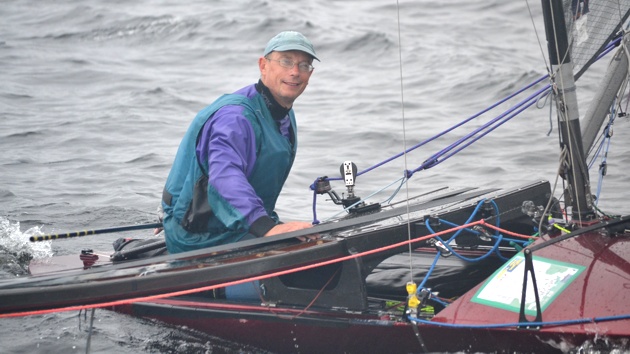
Ulrike_veerkamp.jpg)


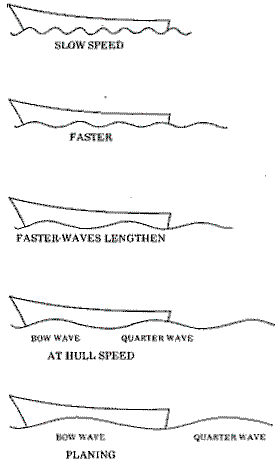

Ulrike_veerkamp.jpg)
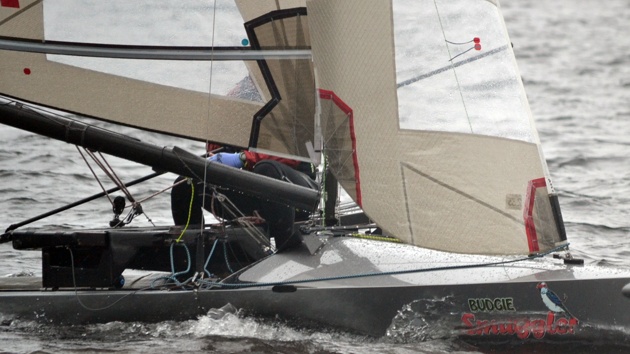
Ulrike_veerkamp.jpg)
Ulrike_veerkamp.jpg)
Ulrike_veerkamp.jpg)
Ulrike_veerkamp.jpg)
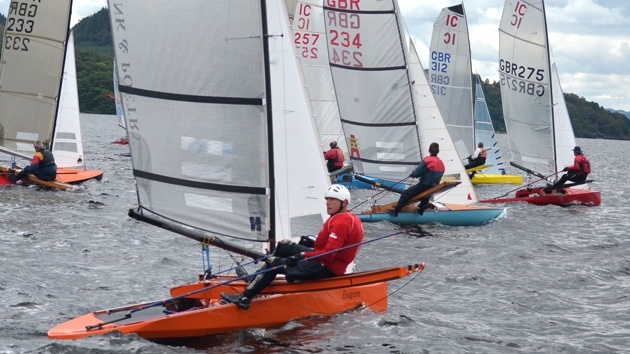
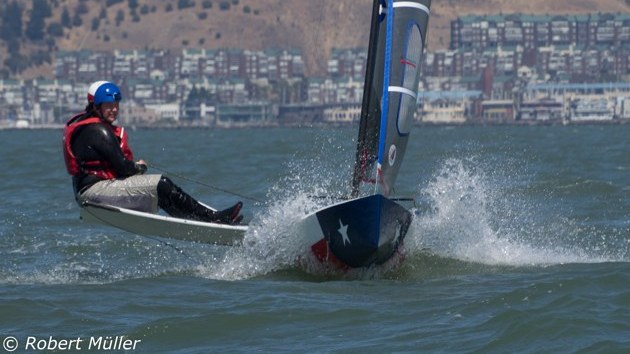
Ulrike_veerkamp.jpg)